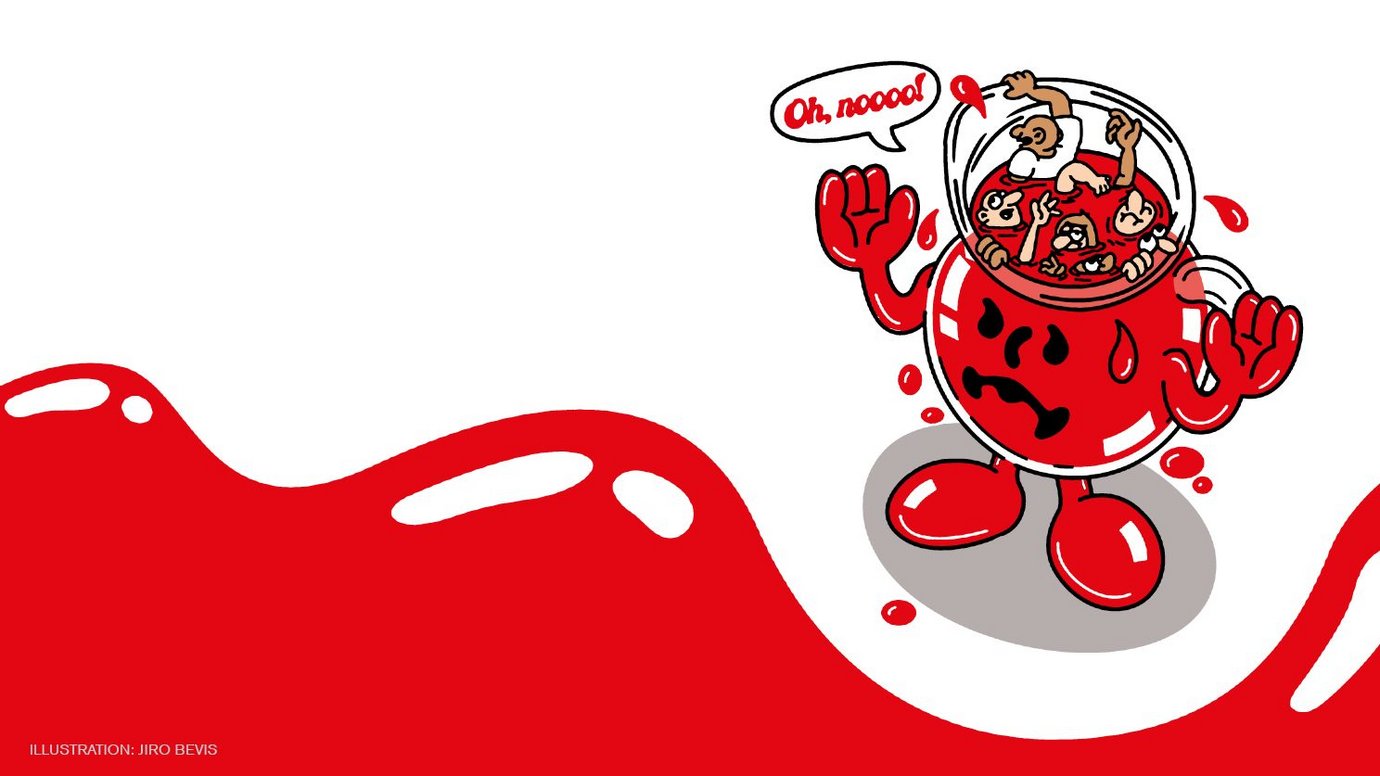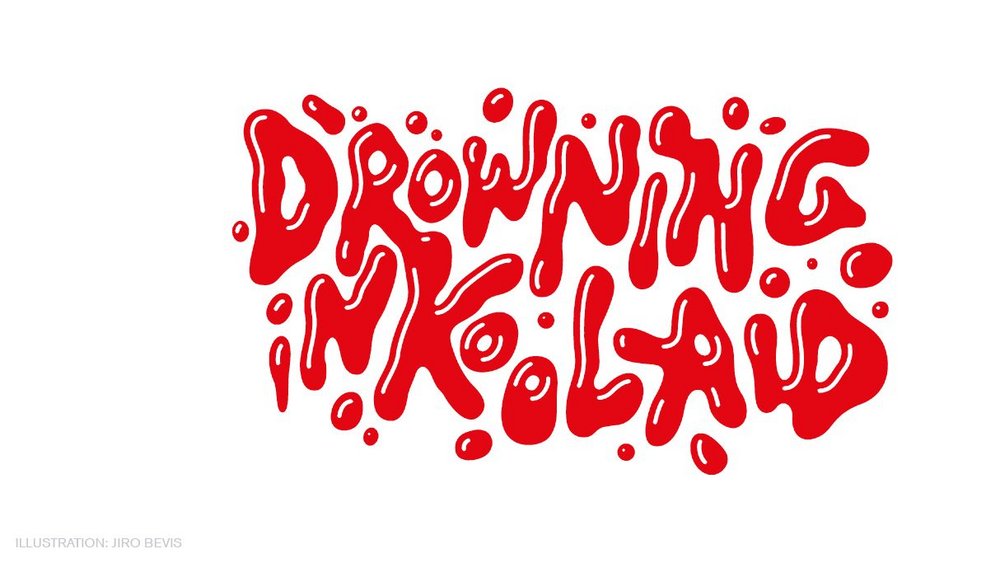Drowning in Kool-Aid /
Is being your brand’s most die-hard fan a demonstration of loyalty, or just a prejudicial way to divorce yourself from the real world?

You’ve all heard the horror stories. It’s likely that you’ve actually found yourself in a horror story. It’s the classic industry tale of being trapped inside a brand. You know the sort of thing: the people who work at a clothing brand only being allowed to wear their own label; the beer brand marketers that have had to leave bars because a competitor’s drink is on tap.
I recently heard one particularly demeaning story about an agency head who threw a party at their home that wasn’t work related, but had some business-related peers present. Mingling among the invited family and friends, the agency head found a client going through their kitchen cupboards to check that the host hadn’t bought a competitor’s breakfast cereal. On finding an offending box, the client proceeded to rant at the host (in front of other guests) about the shocking lack of loyalty, not swayed by the apparently weak argument that, ‘My kids just prefer the other one.’
To hell with your children, bend the knee to my business. So despite Byron Sharp’s reservations about the existence of loyalty at all, it seems it’s alive and almost literally kicking on the inside of the marketing world. But, like all good horror stories, it should come with a warning: you’re not just drinking the company Kool-Aid*, you’re drowning in it. Overly rigorous brand loyalty is divorcing you from reality and that can be a lot more harmful to a brand than it is to the mood of a house party.
Few people in the real world demonstrate the type of obsessive loyalty we’re expected to have in the marketing world.
Alex Jenkins, Contagious
Goodbye, real world
Few people in the real world demonstrate the type of obsessive loyalty we’re expected to have in the marketing world. The ones that do are so rare that they become novelty news items: ‘Meet the man who’s eaten at the same fast-food chain for every meal for the last 20 years!’ ‘What a weirdo,’ we smirk as we lace up the pair of trainers we have to wear if we want to keep that sports brand account.
And so we stop experiencing life as our customers do. It may be just one small area of their lives but, crucially, it’s probably the one area that we should care most about: the bit that deals with the brand we’re working on. How likely are you to spot and understand the rise of the craft beer movement if you only drink your company’s lager brand? Yes, you can read and interpret the data but it’s a damn sight easier to understand someone’s life if you experience it as they do. It’s also a damn sight easier to communicate effectively with them if you can empathise with them.
In his book Creative Blindness, Dave Trott describes the risks of creating work without considering the reality of people’s lives. An agency presents a new poster campaign to a client and, in the presentation room, they spend an hour poring over every detail – the copy, the subtle visuals, etc. ‘But then the poster runs on a street… in the rain, at night. And everyone wonders why it doesn’t work at all,’ he notes.
Us and them
I have a theory: the reason this type of thinking is so prevalent has its roots in the psychology of prejudice. The first step in the creation of prejudice isn’t identifying an outgroup (ie, people not like us), but in the forming of an ingroup (ie, people who are like us). Instead, a group forms around what we have in common: ‘You’ve got an iPhone! I’ve got an iPhone too!’ Only then do we begin to create outgroups, defined by what they don’t have in common with us: ‘Check out those guys using BlackBerry handsets. I’m beginning to think they might not be as good as us.’
Try this little experiment. If I asked you to describe yourself in three words, which would you choose? You’d want to pick carefully. Three words that best defined you, maybe considering your age, profession, nationality, outlook on life, gender or physical appearance. Something like ‘young, creative, woman’. Or ‘optimistic, tall, French’. Three words are pretty limiting so what if I gave you 10 words? Or a hundred. Or a thousand. Because how many words would you need to be given before you decided to call yourself a ‘consumer’? I suspect that it’s not the word limit that’s stopping you from using that particular adjective.
We spend all day referring to others as consumers, even though it’s a term we would never use to describe ourselves. We are an ingroup, they are an outgroup. They are not like us. We have dehumanised them, labelling them with a term that, ironically, they wouldn’t even use to describe themselves. If this sounds like an opinion too far, read up on the work of psychologist Henri Tajfel to see the type of effect this can have.
In a series of experiments, Tajfel would divide volunteers randomly into two groups. The people would have no prior knowledge of each other and, to all intents and purposes, nothing in common beyond the fact that they had just been lumped into a group together. Regardless of how they had been divided, people would always show favouritism to whatever group they had been placed in. Tajfel wrote in his 1974 research paper Social Identity and Intergroup Behaviour that ‘on the basis of a coin toss… simple categorisation into groups seems to be sufficient reason for people to dispense valued rewards in ways that favour ingroup members over those who are “different”’.
Fundamentally, we see consumers as different. Because they are ‘not like us’, that makes them harder to empathise with and harder to understand, which in turn makes it harder to communicate with and, according to Tajfel, harder to act in their interests rather than ours.
Any company that claims to have an unwavering focus on customer experience is creating a barrier to achieving this goal as soon as they define their customer in terms that differ from the people who work there. And experiencing your own brand in a way that the customer does not – ie, not as one of many options to consider and purchase but as the only option – is simply creating another unnecessary barrier.

Snap back to reality
Some years ago, I was on a plane destined for Cannes Lions, no doubt joining many other adlanders on the same flight. As I boarded, I sat down next to a woman who was on her phone and saying to someone on the other end without a hint of irony, ‘I’m on the plane now. Yeah, it’s ok but it’s full of consumers.’
Metaphorically, I was listening to her sink into an ocean of Kool-Aid without a life jacket. My suggestion is that you stop being the biggest fan of your own brand and instead become the biggest fan of your category. Don’t just eat your own dog food, eat everyone’s dog food. A lot of people don’t buy or use your brand, so understand what they see in the competition that you might be blinding yourself to. Become a light buyer of all the brands in your sector.
Remember, you’re trying to recruit beer drinkers, clothes wearers, breakfast eaters, car drivers and dog owners – not consumers. A consumer stops, pays attention to every detail in your outdoor ad, scans your QR code and gleefully ticks the box to opt into all your marketing messages. A human drives past in the rain and barely notices the poster is even there. A consumer is different to us because if no one would ever describe themselves as one, then consumers don’t really exist.
But humans do. And a human would never drown in Kool-Aid because they know it’s a damn stupid thing to do
*‘Drinking the company Kool-Aid’ passed into the vernacular after 900 cult members ingested poison mixed with the flavoured drink in Jonestown, Guyana,in the late 1970s. Except they may not have actually mixed the poison with Kool-Aid but rival Flavor Aid. Unfortunately, being better known, Kool-Aid stuck in the public consciousness.
This article was taken from issue 58 of Contagious magazine. Like what you've read? Find out more about Contagious membership here.
Want more of the same? /
We don’t just write about best-in-class campaigns, interviews and trends. Our Members also receive access to briefings, online training, webinars, live events and much more.







